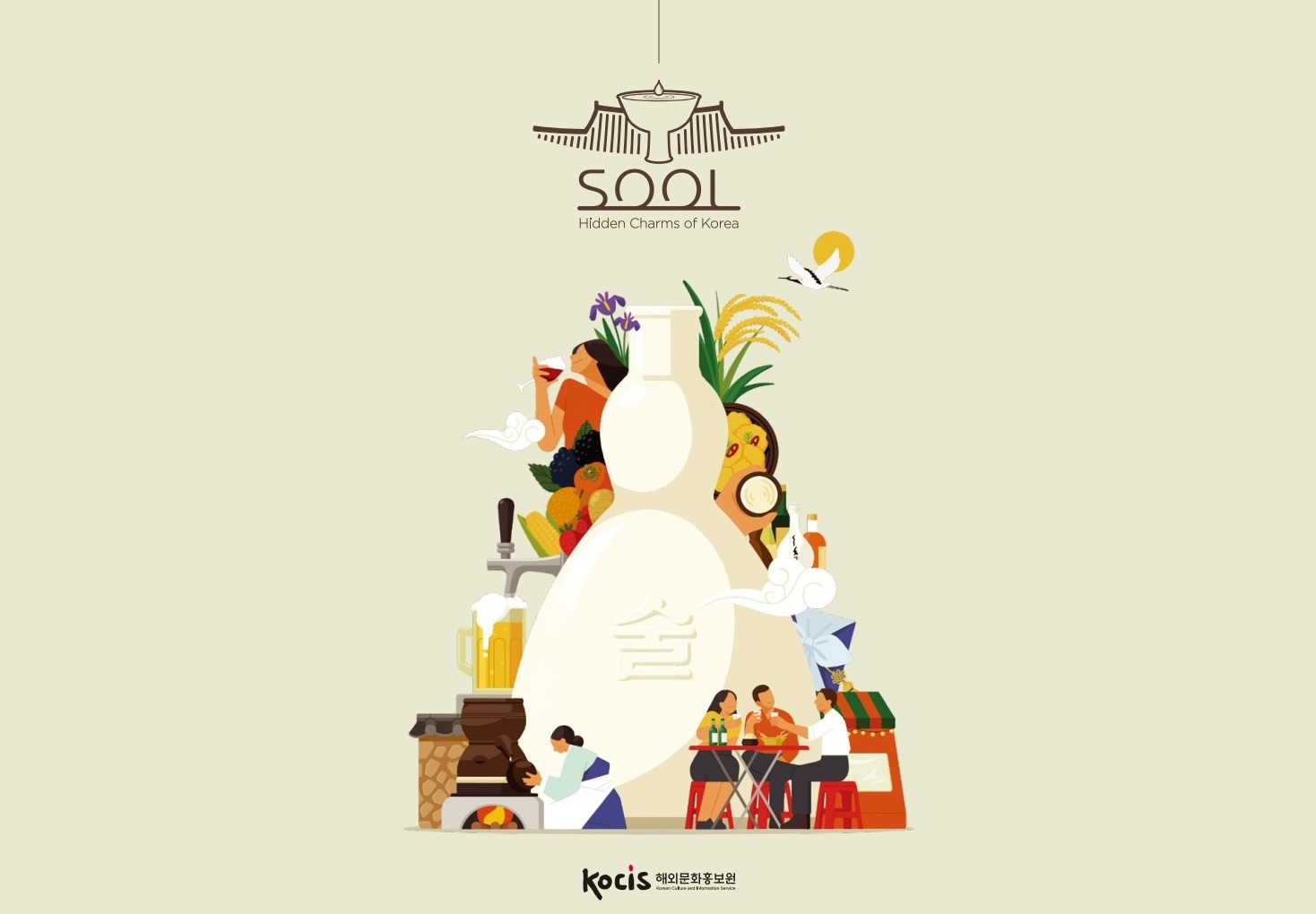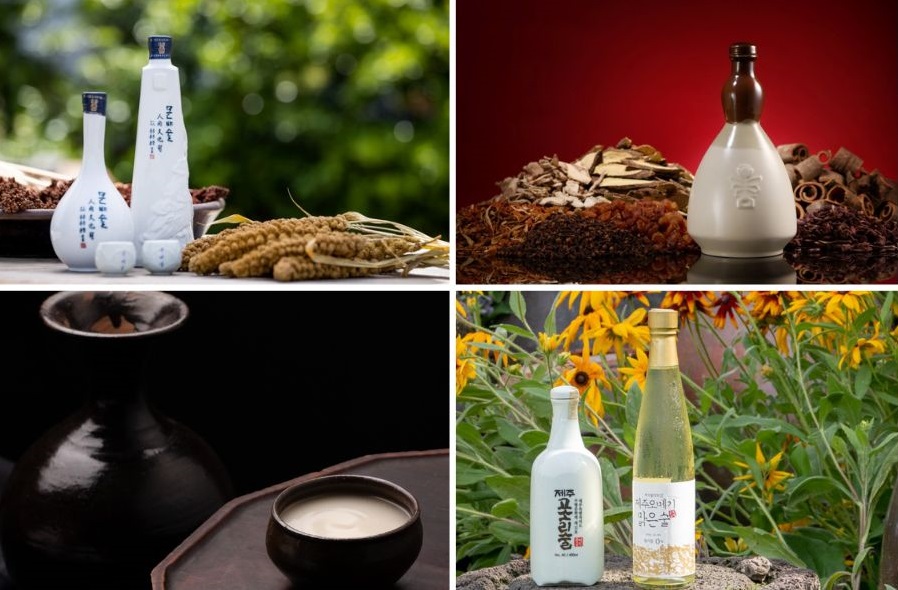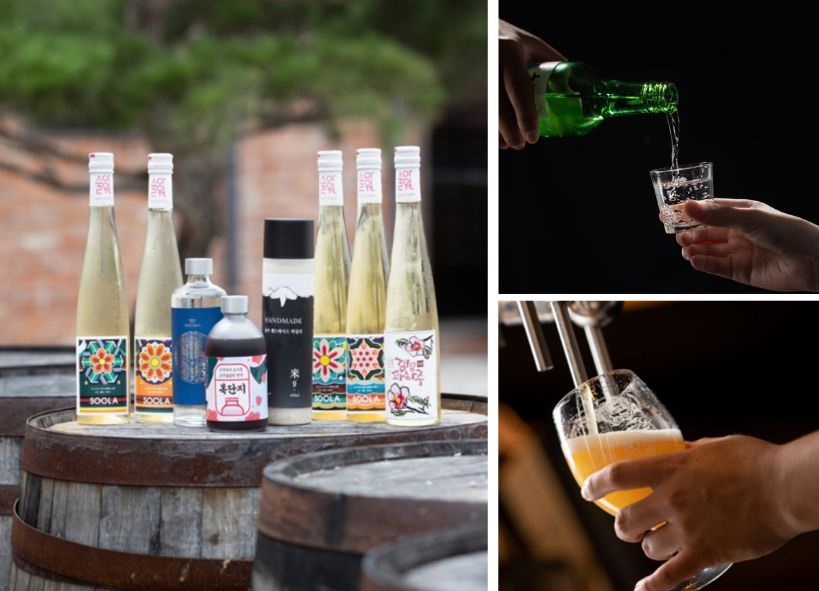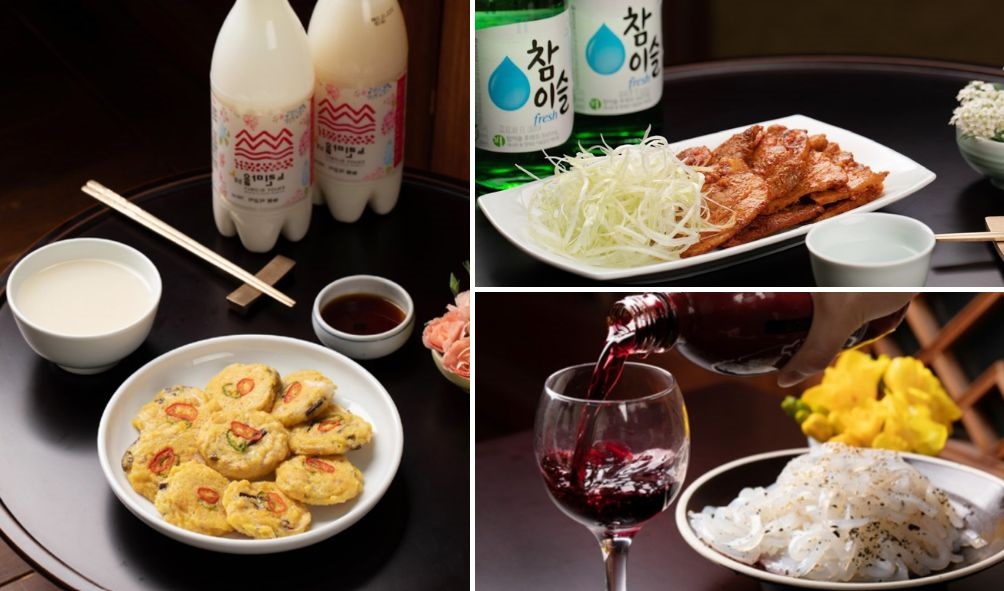- 한국어
- English
- 日本語
- 中文
- العربية
- Español
- Français
- Deutsch
- Pусский
- Tiếng Việt
- Indonesian
By Honorary Reporter Preeti Rawat from India
Photos by Korean Culture and Information Service (KOCIS)

KOCIS’ newly released English-language guide, "Hidden Charms of Korea: SOOL," explores the traditional Korean alcoholic beverages and the drinking culture.
The Korean Culture and Information Service (KOCIS) under the Ministry of Culture, Sports and Tourism recently released an English-language guide, ‘‘Hidden Charms of Korea: SOOL,” which explores a relatively unsung charm of the country — its traditional alcoholic beverages and drinking culture.
The book is divided into three sections — “Sool-ution: Soothing the soul,” which introduces traditional alcohols; “Sool-ution II: Fusion of traditional and hip,” which focuses on present-day drinks made to suit the taste of a diverse range of customers; and “Sool-ution III: Loved by Koreans and the world,” which invites experts and foreigners to discuss ways to enjoy Korean drinks.
I was intrigued by the guide because it offers an insight into the world of traditional and contemporary alcoholic beverages and Korea’s drinking culture, which forms an integral part of its culinary lifestyle. Over time, I had noticed this in the countless Korean dramas and movies I have watched. Unlike in India where this culture is not as celebrated as in Korea, it was refreshing to see Koreans drink with family, friends and acquaintances in the open. I realized this not only creates a familial environment where people bond over a glass of alcohol but also celebrates a rich tradition and culture with the exploration of diverse traditional beverages.
Here were my key takeaways from the articles and interviews.
"Sool-ution: Soothing the soul"

(From top left) Traditional Korean alcoholic beverages munbaeju, gamhongno, makgeolli and Jeju omegi malgeunsul.
My knowledge of traditional Korean alcoholic drinks was limited to makgeolli, a milky rice wine. However, this section introduced me to four other beverages — munbaeju (traditional wild pear liquor), leegangju (liquor made of pear, ginger, turmeric, cinnamon and honey), gamhongno (liquor made with rice, non-glutinous millet, longan arillus, cinnamon, dried tangerine peels, dried clove buds, ginger, licorice roots and lithospermi radix) and omegi malgeunsul (millet liquor). These beverages have been served for centuries in past dynasties, and gamhongno even finds a mention in pansori (traditional lyrical opera) stories.
I was amazed to learn more about the extensive but satisfying and rewarding process of producing these beverages and how master brewers and distillers have dedicated themselves to keeping this tradition alive through diversity and experimentation. I thoroughly enjoyed reading Park Rok-dam’s article describing the role of liquor in families, ceremonies and society, and how traditional sool remains popular because of its “health benefits and its ability to evoke natural changes and seasonal sensations.”
"Sool-ution II: Fusion of traditional and hip"

(From left) A display of gwahaju, soju, raspberry wine and makgeolli, soju (top) and beer.
The stories of the people who decided to walk the path to produce soju and beer for their love of these beverages and the eventual appreciation they gained for their contribution to the field were also noteworthy. It was interesting to note the rising number of female entrepreneurs in the business, and also that sool is gaining popularity not only among adults but also youngsters.
"Sool-ution III: Loved by Koreans and the world"

(From left) Makgeolli and nokdujeon, soju and Gaeseong-style dwaeji bulgogi, and bokbunjaju and Gaeseong-style muk muchim.
In this section, I thoroughly enjoyed reading the articles “Pairing Korean food with booze” and “Traditional booze wins over seven Honorary Reporters at tasting session.”
I had heard of the famous food and drink pairings such as fried chicken with beer (popularized as "chimaek"), samgyeopsal with soju, and pajeon with makgeolli, but the first article not only introduces the readers to more food and drink combinations but also explores the reasoning behind the combinations — they add nutritional value and “create good harmony with the characteristics of each beverage.” I’ve never tried any of the combinations, but when drinking is accompanied by health benefits, I would not want to miss this opportunity.
The next article was something I had longed to read. Seven Honorary Reporters residing in Korea had the opportunity to visit the Sool Gallery in April 2022 where they tasted six traditional alcoholic beverages designated Intangible Cultural Assets, which I hope to try someday.
This section also had other engrossing articles about experts on Korean drinking culture who are redefining the culinary and drinking space to promote traditional and contemporary beverages, a Korean liquor sommelier’s journey into the world of alcohol, and an informative Q&A session with a traditional sool expert.
It was a delight to flip through the pages of this exhaustive guide and learn a great deal about the much-loved alcoholic beverages. For those interested, the e-book version is available on Korea.net official website: https://www.korea.net/Resources/Publications/About-Korea
kalhong617@korea.kr
*This article is written by a Korea.net Honorary Reporter. Our group of Honorary Reporters are from all around the world, and they share with Korea.net their love and passion for all things Korean.